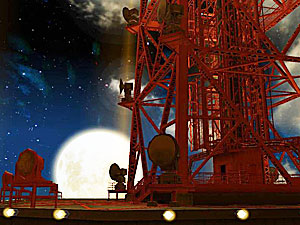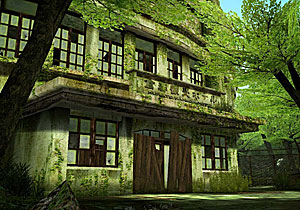Back in November, there was an interesting article in the online BBC News magazine with direct relevance to the Where London Stood project and that might also be of interest to those interested in “modern ruins.” “The secrets of Britain’s abandoned villages,” by Tom Geoghegan, discusses villages and other settlements in the UK deserted in the twentieth century.
People abandoned the settlements for a variety of reasons. Sometimes general economic decline forced inhabitants to leave (e.g., Dyliffe, in Powys). Other times, natural processes such as coastal erosion took their toll (e.g., Hampton-on-Sea in Kent). And on other occasions, people were required to leave by a compulsory purchase order — either to make way for a military training ground, as in the case of Imber (in Wiltshire) and Tyneham (Dorset), or a new reservoir, as in the case of Mardale (Cumbria) and Derwent (Derbyshire).
It’s possible to find some of these sites on Google Maps. Below is an aerial photograph of Tyneham. The unroofed remains of several buildings are clearly visible:
Follow the link to “View Larger Map” and it’s also possible to use Street View to see ground level photographs of some of the buildings. There appears to have been some restoration work — the 1940s telephone box is particularly striking.
Tom Geoghegan’s article includes a couple of nice gestures towards the archaeological. First, there’s this guide to finding lost villages:
- A church standing by itself is a tell-tale sign
- Bumps and lumps on landscape could be earthworks
- Different colours in soil
- Stone or brick settlements might have outline remains
Second, the article touches on some of the conflicted feelings that we have towards ruins, setting them in the context of archaeological research.
Archaeologists are happy because the remains give them an undisturbed snapshot of society, [Trevor Rowley] says, but there is an underlying sadness to these events. Although some people affected were rehoused, many others took up a life of squatting while the most unfortunate turned to vagrancy.
I think that the “underlying sadness” contributes to the fascination that these sites have for archaeologists. I also find it quite interesting that Tom Geoghegan doesn’t question the idea that archaeologists might be interested in modern remains.
Third, the article sets these twentieth century “abandonments” in the context of broader British history, indicating three other periods when significant numbers of villages “disappeared”: the fourteenth Century, as a result of depopulation in the wake of the Black Death; under the Tudors, as fields were enclosed for pasture; in the eighteenth and nineteenth Centuries, with the formation of parks for large country houses.
Overall, I think that it’s quite a nice piece of writing. It leaves me wanting to follow up on the subject and there are a number of obvious ways forward:
- The article contains a link to Stephen Fisk’s excellent Abandoned Communities website. There’s a lot of content and a great map of the sites that he discusses.
- The BBC has covered the topic previously — e.g., SUNKEN VILLAGES (BBC Inside Out – East Midlands: Monday September 1, 2003) and Lost villages revealed once again (BBC News: Saturday, 11 February 2006). In addition to using the articles as basic information resources, it might also be worth tracing when interest in the lost villages reemerges in the mass media.
- I’d also like to spend more time locating some of these sites on Google Maps. While, in many cases, the evidence of the villages simply may not survive, I’d like to see what else I can find.
There are also several books on the subject that I should try to get my hands on:
- Beresford, M. W. The Lost Villages of England. Rev. ed. Stroud, Gloucestershire: Sutton, 1998.
- Dyer, Christopher, and Richard Jones. Deserted Villages Revisited. Hatfield, Hertfordshire [England]: University of Hertfordshire Press, 2010.
- Rowley, Trevor and John Wood. Deserted Villages. Oxford, New York: Shire, 2008.
Finally, the subject of compulsory purchase orders and the granting of land to the Ministry of Defence also reminds me of a book that I read last spring:
- Woodward, Rachel. Military Geographies. Malden, MA: Blackwell Pub., 2004.
I’ll need to revisit this and see what she says about the CPOs and forced re-locations (if anything).



